

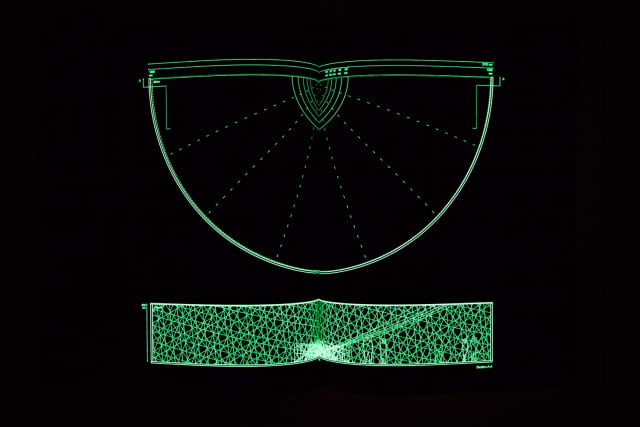
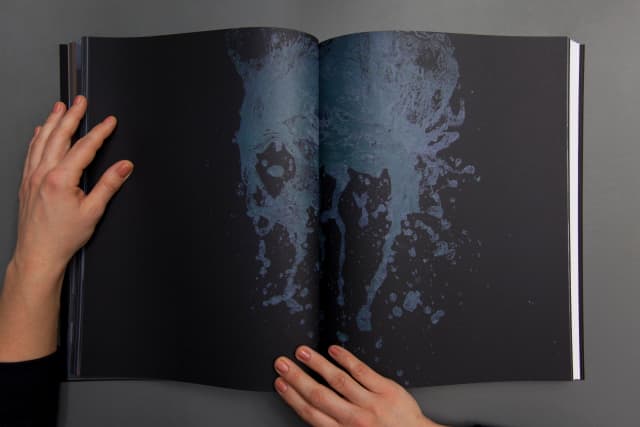




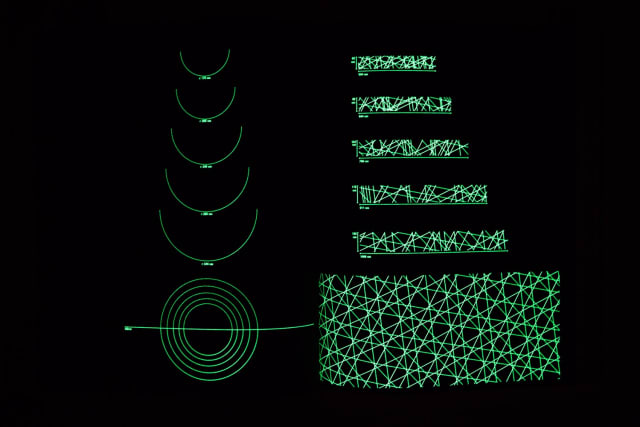
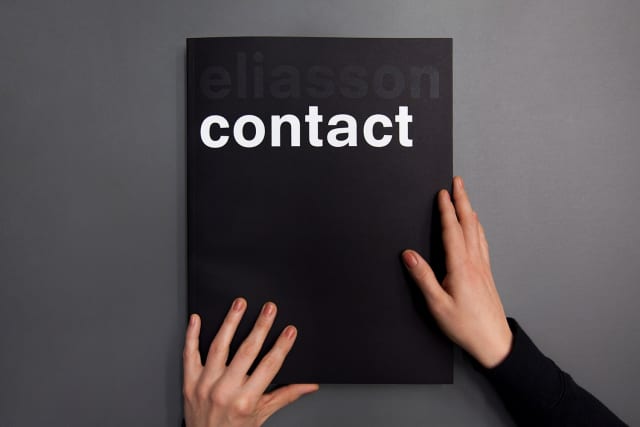


Concert and poetry night, 27 February, Alliance Ethio-Francaise d'Addis Abeba
Organized by Institut für Raumexperimente
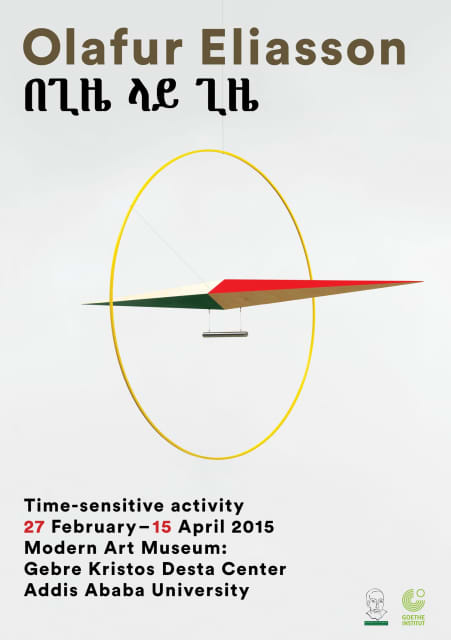

Contact closes today. Stay in contact.
Video: Contact - a film by SHIMURAbros
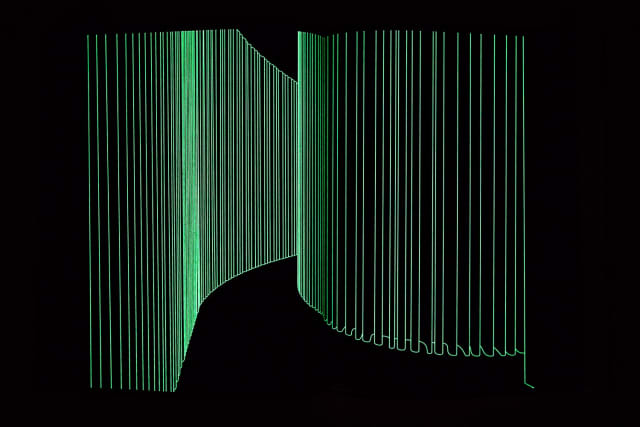
Out now: Catalogue for the exhibition, Contact, at Fondation Louis Vuitton
Available here
Video: Contact - a film by Claire Denis
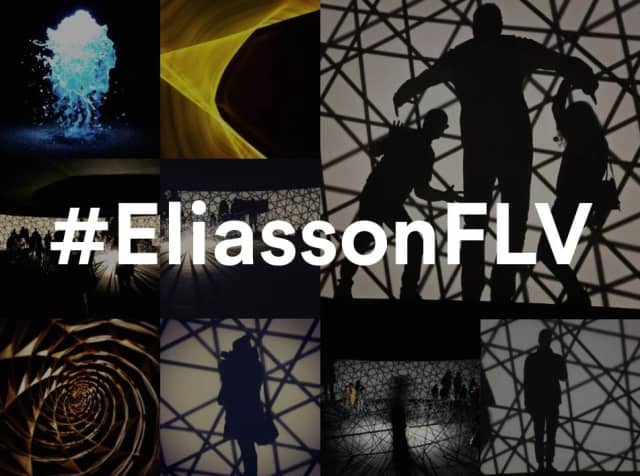
Share your response to Contact on Instagram
See all contributions here - - > #EliassonFLV
Video: Bridge from the future - a film by SHIMURAbros
Video: Double infinity - a film by SHIMURAbros
Bruno Latour, Anti-Zoom
The optical devices and unexpected courses of events in Olafur Eliasson’s exhibition disturb our perceptions and force us to address the question of scale in space and time in an entirely new manner.
For in fact neither the schema of space nor that of time appears continuous: levels of reality do not nestle one within the other like Russian dolls. It cannot be said that the small or the short lies within the large or the long, in the sense that the largest or the longest contain them but with just “fewer details.” When one shifts from a map on a scale of 1 cm. to 1 km. to one on 1 cm. to 10 km. the latter does not contain the same information, if less exact, as the former: it contains other information that might (or might not) coincide with what appears in the former.
This metaphor emerges from the optics of photography, from the zoom created by the use of a lens called—it’s obvious why—”telescopic.” In fact, one might almost posit a rule: good artists do not believe in zoom effects.
Bruno Latour, Anti-Zoom, excerpt from Contact catalogue
Video: Map for unthought thoughts - a film by SHIMURAbros
Caroline A. Jones, Event Horizon
We are convinced that horizons exist, even if we never reach them. Relational and species-specific, horizons take very different forms for the scurrying beetle, the preying hawk, and the navigating shark. The etymology for the word itself is rooted in a “limiting circle,” yet we also learn, in living with it, that the horizon is limitless and untouchable: it’s just over there, where the future promises to reveal itself, and there, where the past recedes– eternally morphing as we approach, eternally disappearing behind us.
Caroline A. Jones, Event Horizon
Excerpt from Contact catalogue
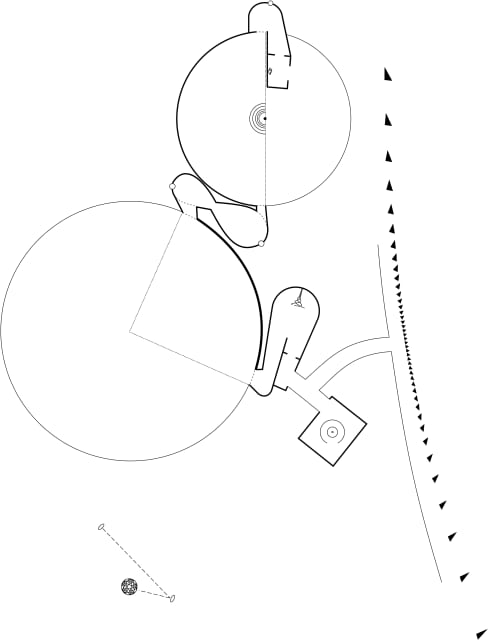
Liminal, Richard Sennett, excerpt from Contact catalogue
Liminal: an arty, abstruse, abused word. Also, a real experience. “Liminal” names that moment when things are on the edge of appearing or disappearing, you aren’t sure which. “Liminal” can name the play of shadows on a wall; uncertainty comes because you don't know whose bodies casts the shadow, or, if the shadow is giant, whether the real body is also giant, or instead, minute -- the shadow, as it were, greater than the self. Again, a liminal experience can be one in which a strong, contained light obscures rather than illuminates the space around it, like the penumbra of strong light and deep dark which occurs as an eclipse of the moon comes and goes; during this transition, you are aware of darkness in a way you normally aren’t.
Richard Sennett, Liminal, excerpt from Contact catalogue
Olafur Eliasson talks about his collaboration with Michel Bitbol at Fondation Louis Vuitton, 23 January 2015
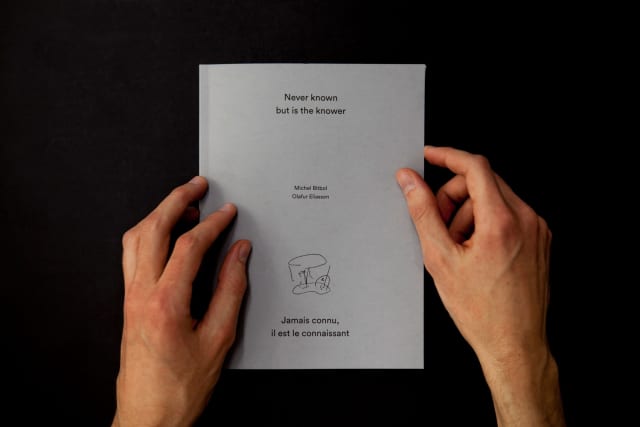
Out now: Never known but is the knower; Lecture by Michel Bitbol, drawings by Olafur Eliasson. Published on the occasion of the exhibition Contact at Fondation Louis Vuitton
Available at Buchhandlung Walther König
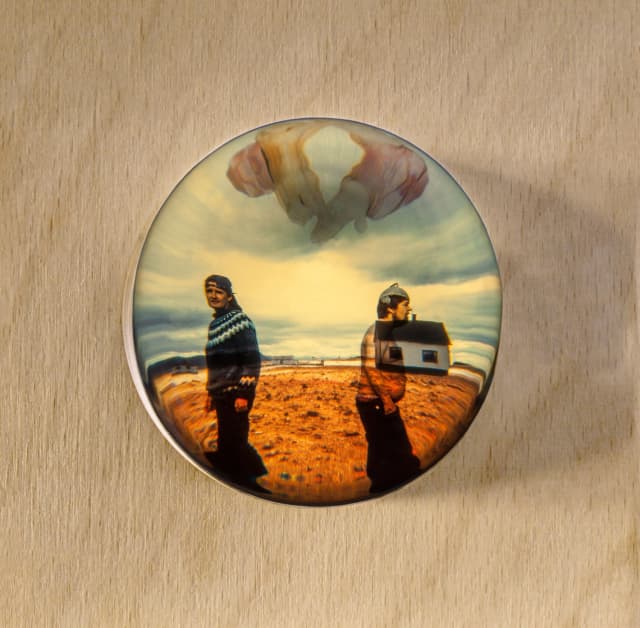
Detail of Guckkasten, 1994
Olafur Eliasson: Boros Collection 1994 - 2015 at the Langen Foundation, opens Saturday 18 April

Drawing is a dance of the hand. Sketches for Contact
Drawing is movement.
When I look at a drawing, I draw along with it. I trace the lines along with the person who originally made the marks. Invisibly, on the inside. The trace – on paper or in physical or virtual space – is transformed into felt presence and my response charts out a faint psychogram, my physical self. I/body – a resonator and emotional agent in one. My interior drawing is as real as any mark on paper, canvas, in stone.
To look at a drawing is to feel time, experience duration. A dialogue beyond temporal and spatial boundaries begins.
Drawing is touching the world.
Olafur Eliasson
Featured video: rediscovered film material of Vortex for Lofoten, 1999
On view as part of the exhibition opening on Saturday at the Langen Foundation
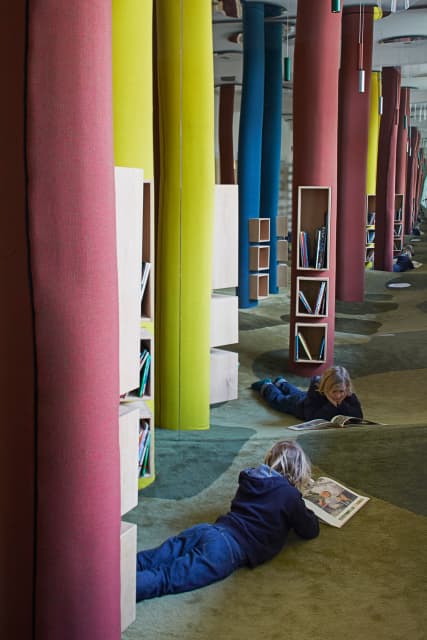
Now: Raum für Bildung und Bilder by Olafur Eliasson, responding to Kirsten Winderlich's concept of the Bilderbuchwerkstatt at grund_schule der künste, Berlin. Photo: Nick Ash
Excerpt from Jacques Derrida ‘White Mythology’, in Margins of Philosophy
Each time that there is a metaphor, there is doubtless a sun somewhere; but each time there is sun, metaphor has begun. If the sun is metaphorical always, already, it is no longer completely natural. It is always, already, a luster, a chandelier, one might say an artificial construction, if one could still give credence to this signification when nature has disappeared. For if the sun is no longer completely natural, what in nature does remain natural?
Jacques Derrida, ‘White Mythology’
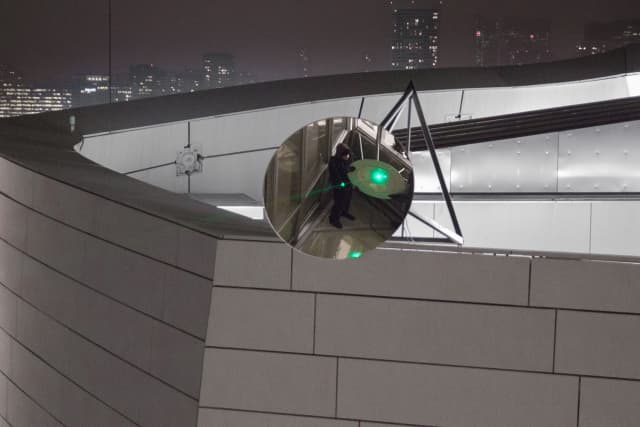
World illuminator on the rooftop of Fondation Louis Vuitton, Paris
As part of Olafur Eliasson’s exhibition Contact, the sun tracker has been installed on the exterior of the Fondation Louis Vuitton. The work directs sunlight to an intermediary mirror and through a skylight, thus illuminating the artist’s geometrical sculpture Dust particle.To track the sun is to track yourself. The sun tracker locates the centre of your orbital ellipse, giving your position right now and rendering visible your path. The reflexive potential lies in understanding that the sun does not rise or set; it is we who are the mirrors, who are circulating, tracking, spinning in our Keplerian ellipses. I want to encourage seeing yourself in a non-egoistic way. You and I are not the centre of the universe, but in fact spinning in altruistic space.
Olafur Eliasson